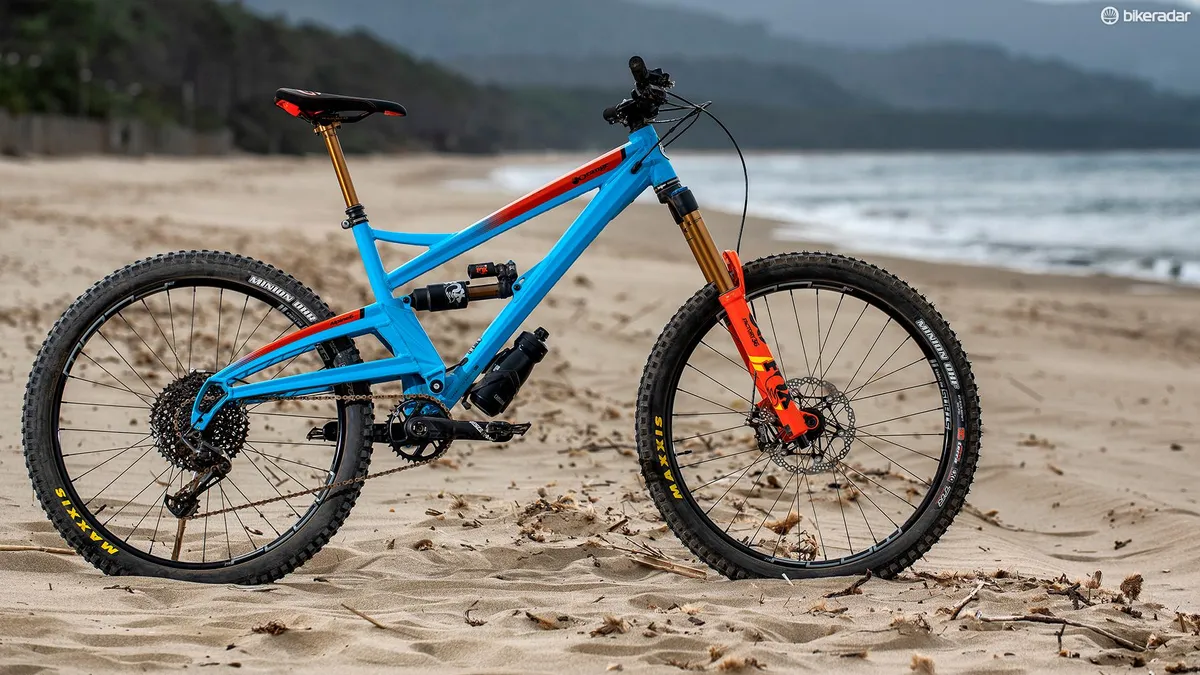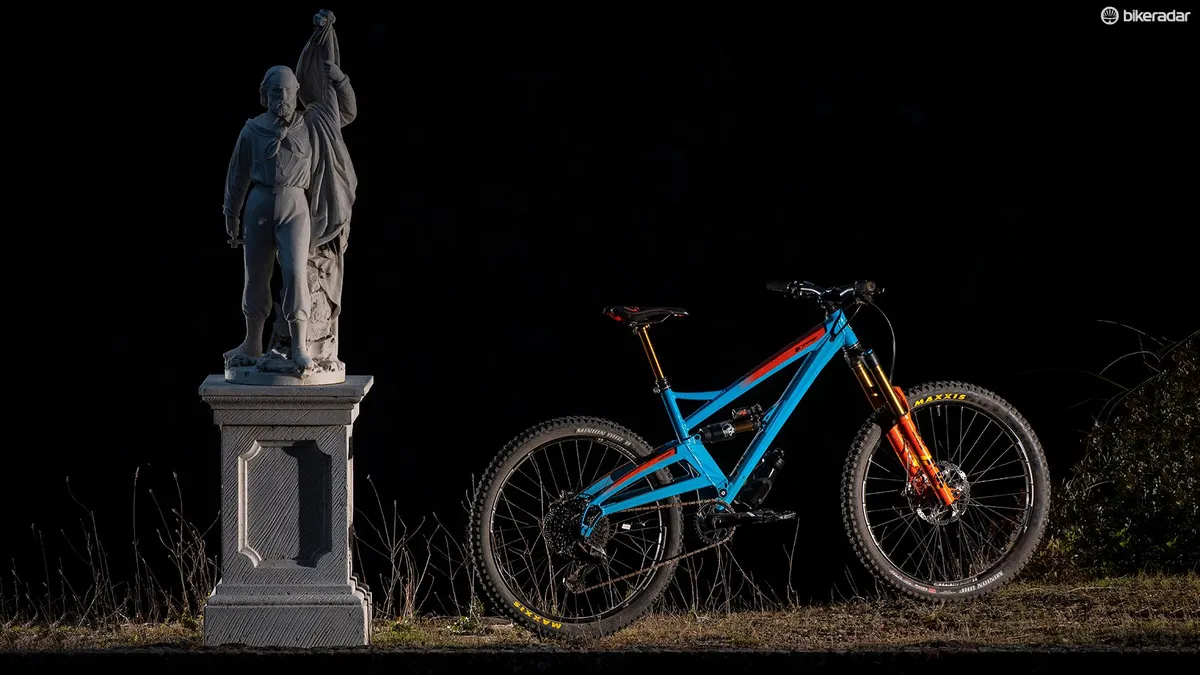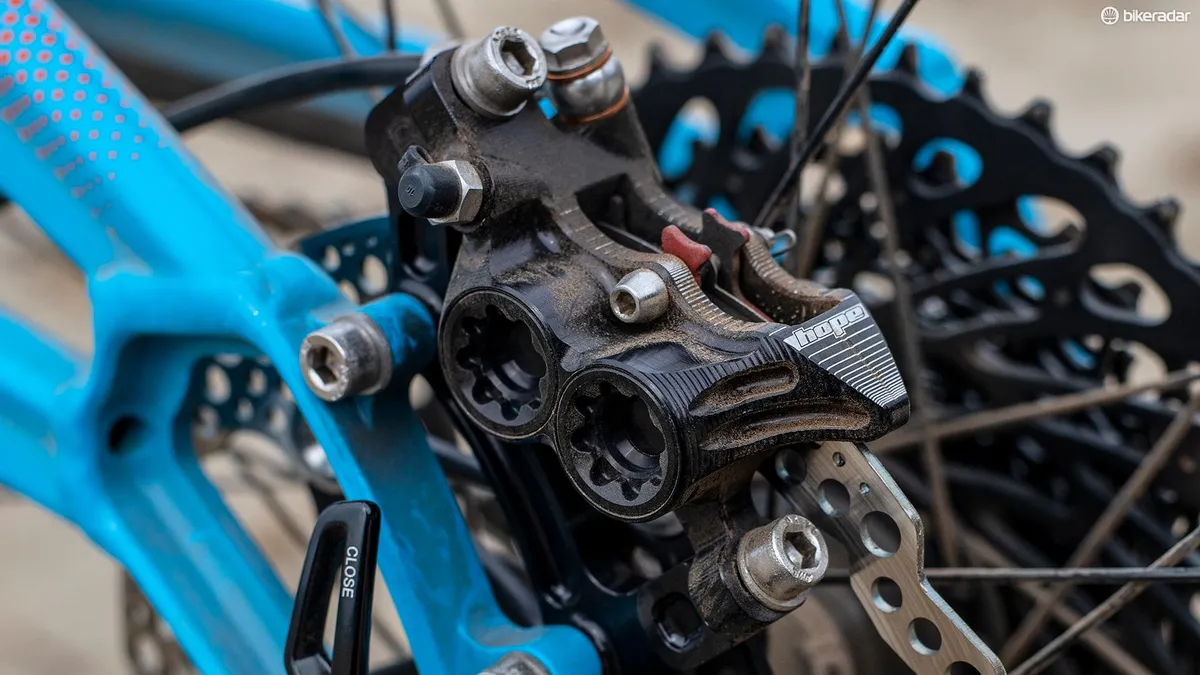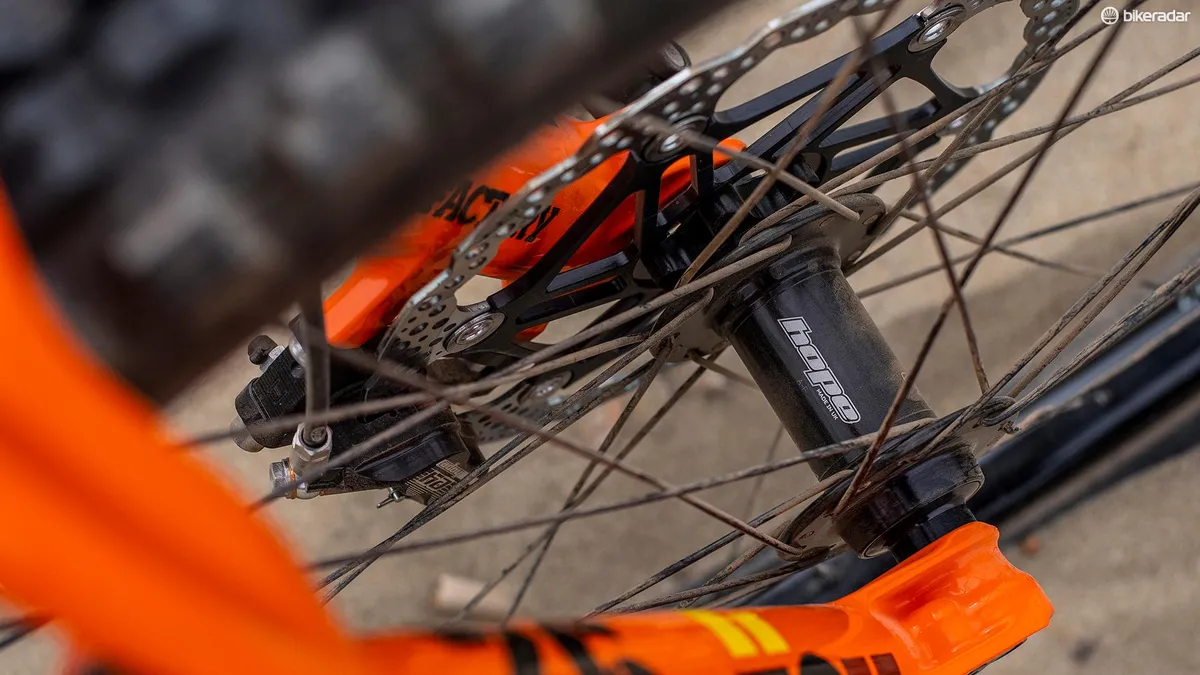Orange unveiled its first bike with the Alpine name back in 2009. It had 160mm of rear-wheel travel and was designed to be burly enough to smash downhill runs yet light enough to ride to the trailheads.
After undergoing a plethora of evolutionary changes, in 2017 the Alpine 160 moniker was dropped to bring it more in line with Orange’s other bikes, and the Alpine 6 was born.
- Marin Mount Vision 9 first ride review
- The Specialized Stumpjumper Evo Pro Carbon has landed
- Troy Lee Designs Stage helmet review
Does the new Alpine 6 top Orange's range of hard hitting single crown bikes?
The new name brought with it some impressive refinements and subtle, but important, changes to the bike’s looks. Fast forward to 2019, and Orange is relaunching the Alpine 6 once again with plenty of important evolutionary changes that use the outgoing model as a solid starting point.
Orange claims these changes address some of the previous complaints about the bike and improve the way it rides.
Orange Alpine 6 Factory frame details
At the top of the list of changes are geometry alterations to make the bike longer, lower and slacker.
Compared to the previous model, the updated Alpine 6 gets an extra 6mm of reach across all sizes, 11.3mm longer chainstays, a 10mm wider pivot and 165mm of travel — 5mm more than its predecessor.
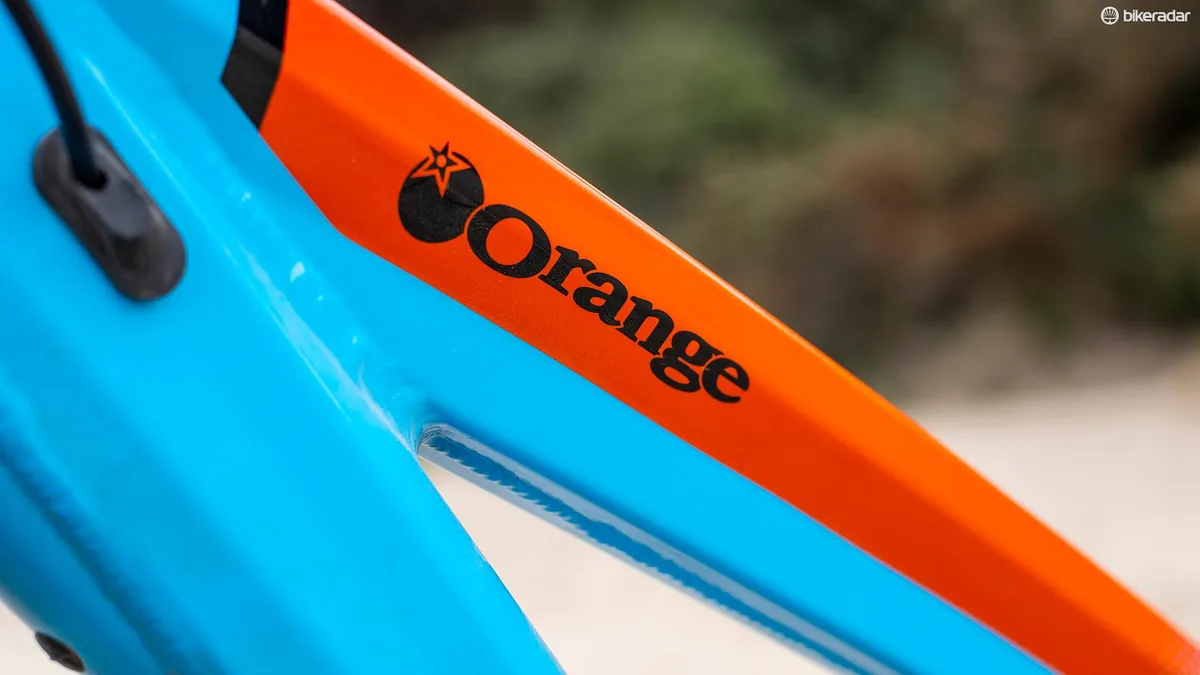
The bottom bracket has also dropped by 5mm and the bike now runs a 17mm bottom bracket drop, which should make it corner like it’s on rails.
The bike also gets a slacker 64-degree head angle and a 74-degree seat tube angle. The bike’s shock has grown from 216mm to 230mm with a 65mm stroke and the frame now runs a metric shock.
Orange has also reworked its sizing. The XS designation has been dropped, but the small bike is now smaller, while Orange has added an XXL at the top end of the scale.
It has also modified the internal cable routing around the head tube to help decrease the amount of cable bow that the previous model had.
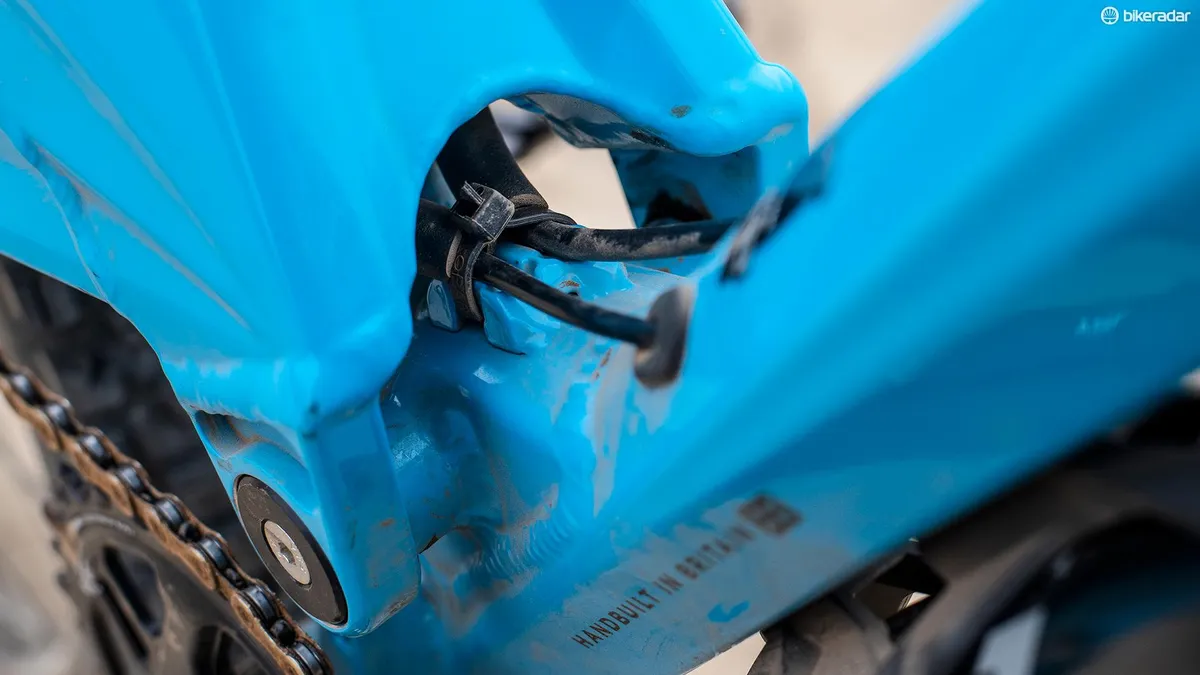
The cable routing system has also been modified in the swing arm, so the cables now pass underneath instead of entering on the front face.
This means Orange has been able to lighten the swing arm by modifying its internal structure without compromising strength.
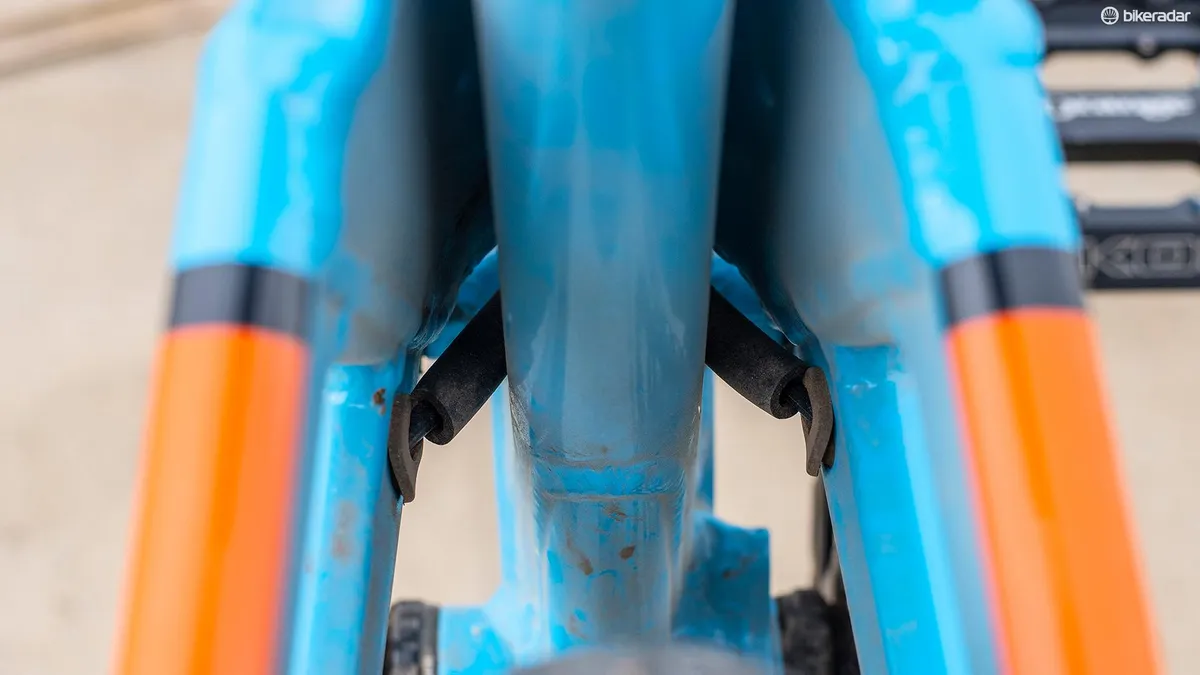
To top it off, the new Alpine 6 gets a water bottle cage mount — complainers rejoice! Although there isn’t space for it inside the front triangle, so it hangs low off the bottom of the down tube.
Orange Alpine 6 Factory suspension information and performance
Orange has modified its suspension to be as linear as possible, and Ashley Ball, Orange’s managing director and mega-passionate bike-nut, says this is to reduce the amount that the shock has to do.
According to Ball, if the bike has a wavy leverage curve then the damping has to behave and react to the bike’s inherent suspension properties, as well as cope with bumps and shifts in the rider's weight.
With a virtually flat suspension kinematic, the shock’s damping only has to react to the rider’s weight shifts and bump absorption.
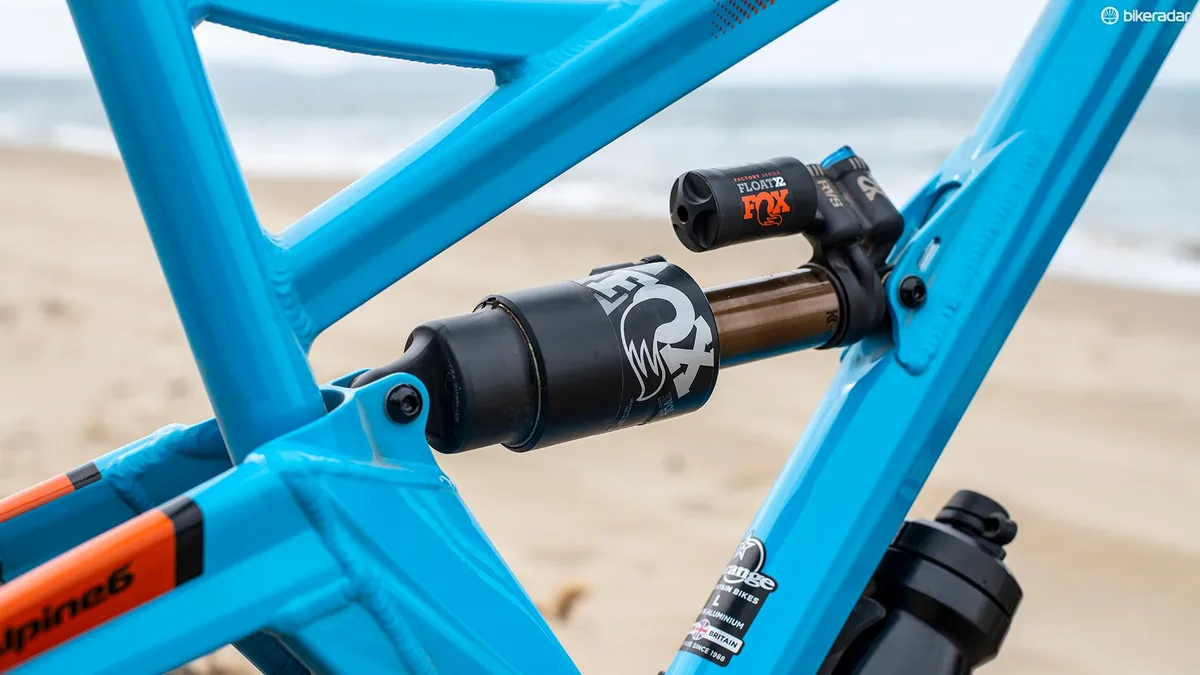
Orange has adjusted the angle of the shock, the location of the two shock mounts and the pivot’s location on the new model. The new Alpine's leverage curve is straight but slightly progressive throughout the bike's travel.
The main pivot sits 10mm lower compared to the previous bike, but because the new Alpine 6’s bottom bracket has dropped by 5mm, the pivot's overall location relative to the chain line has only dropped by 5mm.
This means reduced anti-squat figures compared to the old bike too. Uncompressed in the 50-tooth cassette ring and with a 34-tooth chainring, anti-squat is 137 percent. At 30 percent sag, with the same gearing, the number decreases slightly to 133.9 percent.
Because the pivot is closer to the chain line, it also means pedal kickback has been reduced by 1.5 degrees at suspension bottom out, according to Orange.
To find out more about anti-squat and other suspension characteristics check out Seb’s fantastic guide here.
Orange Alpine 6 Factory kit and specification details
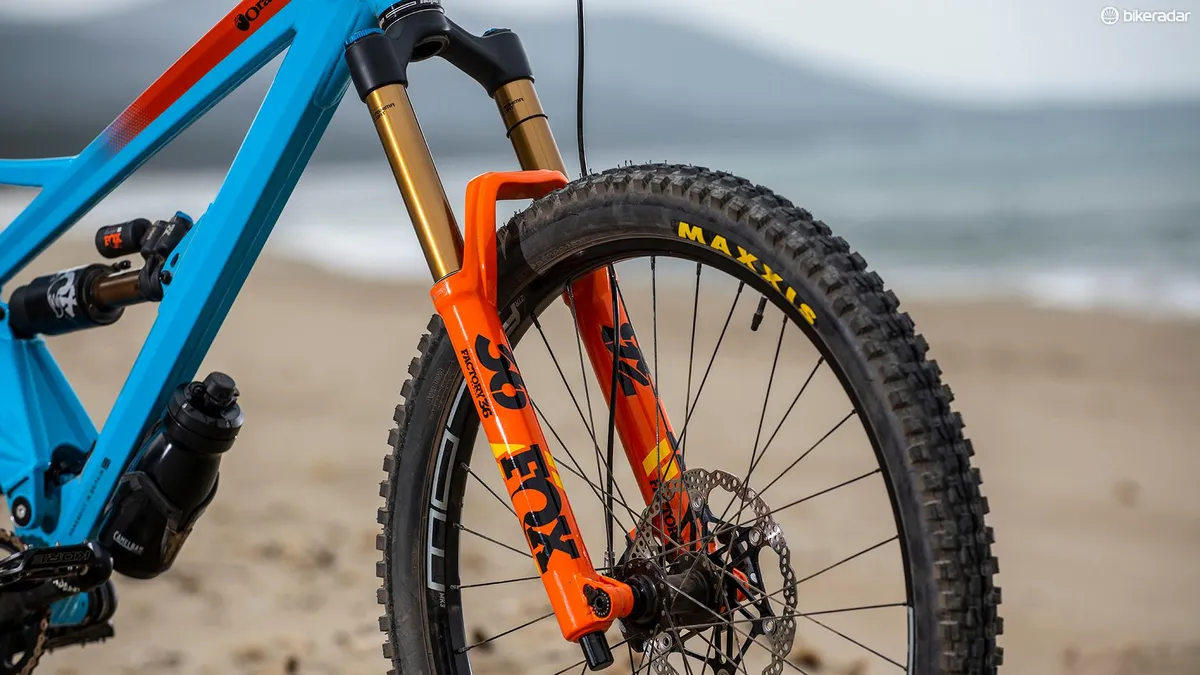
Bolted to the Alpine 6 Factory is a smattering of top-spec kit from Fox, Hope, Stan’s NoTubes and SRAM. Although the kit specced on the bike is customisable to some extent, the Factory bike represents what Orange thinks are the best parts on offer.
The Stan’s NoTubes Flow MK3 wheels are well built and have a 29mm internal width. Orange has opted for Maxxis 2.5-inch wide trail Minion DHF and DHR 3C Maxx Terra Exo tyres, which are set up tubeless from the factory.
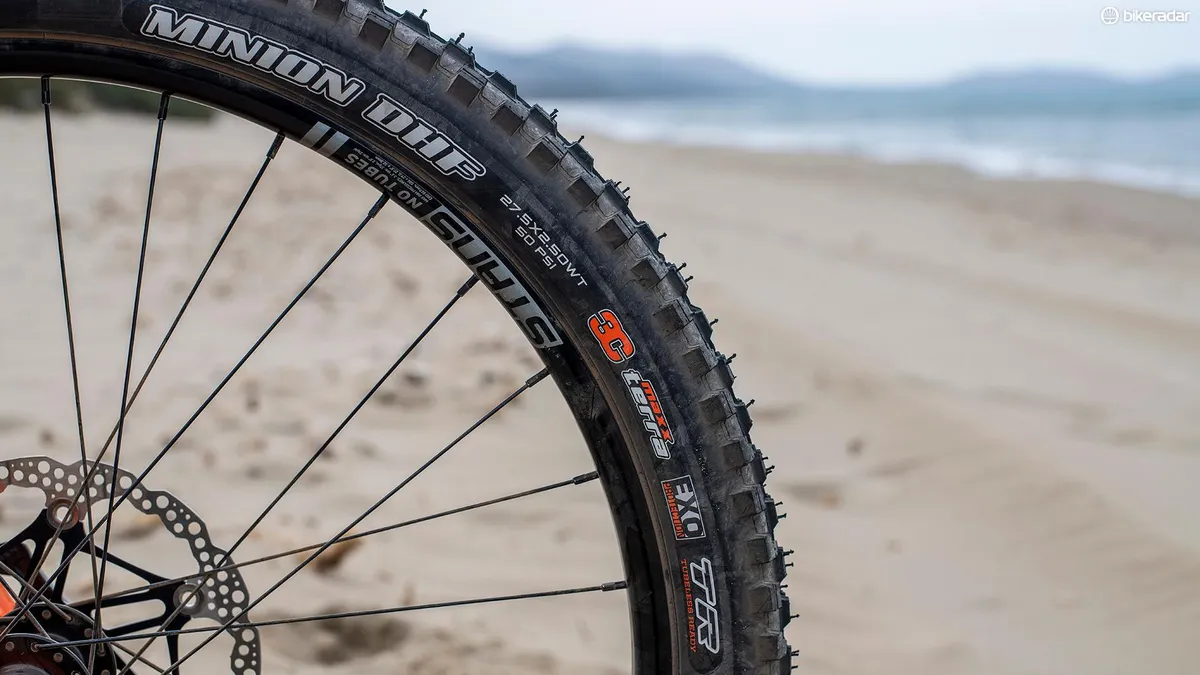
Stopping duties are performed by Hope’s Tech3 E4 brakes with 200mm front and 180mm rear rotors. The brakes have got reach and pad contact adjustment but it’s possible to change them for a pair of Shimano Saints on the Orange website.
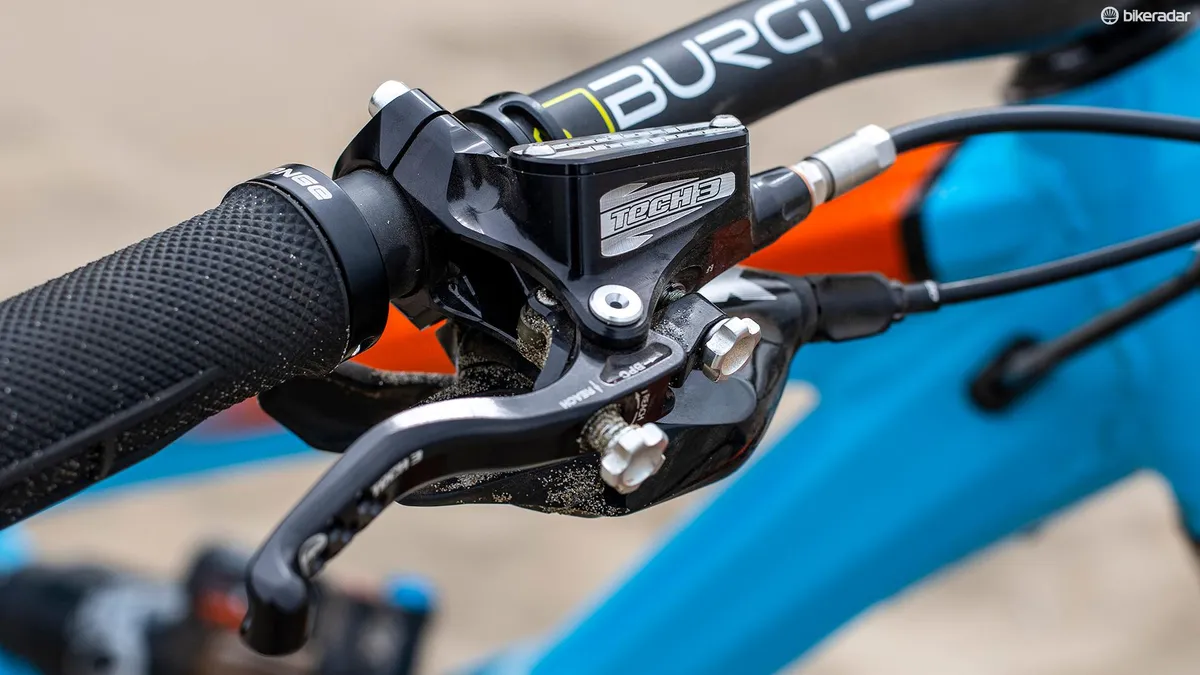
A mish-mash of SRAM’s X01, GX and Descendant 12-speed Eagle-compatible parts make up the drivetrain.
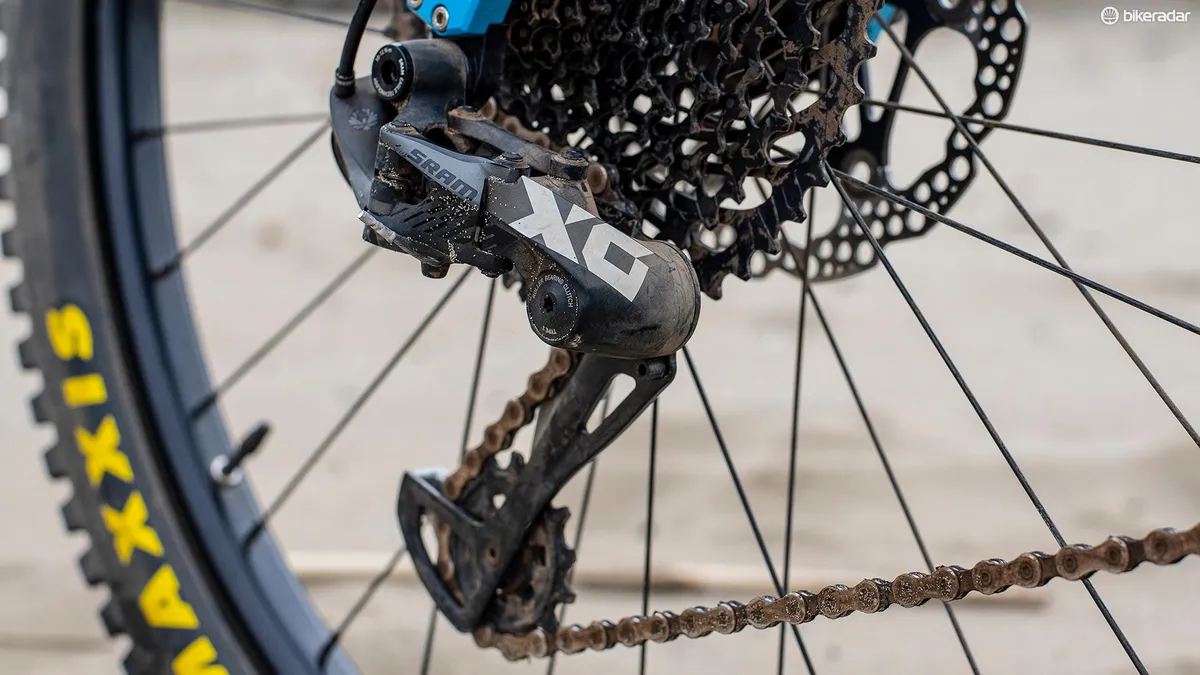
The Factory bike comes specced with Fox Factory 36 Grip2 forks and a Fox Factory Float X2 rear shock, both with Kashima coating. The fork and shock have high- and low-speed compression and rebound adjustments, and the shock has a lockout function.
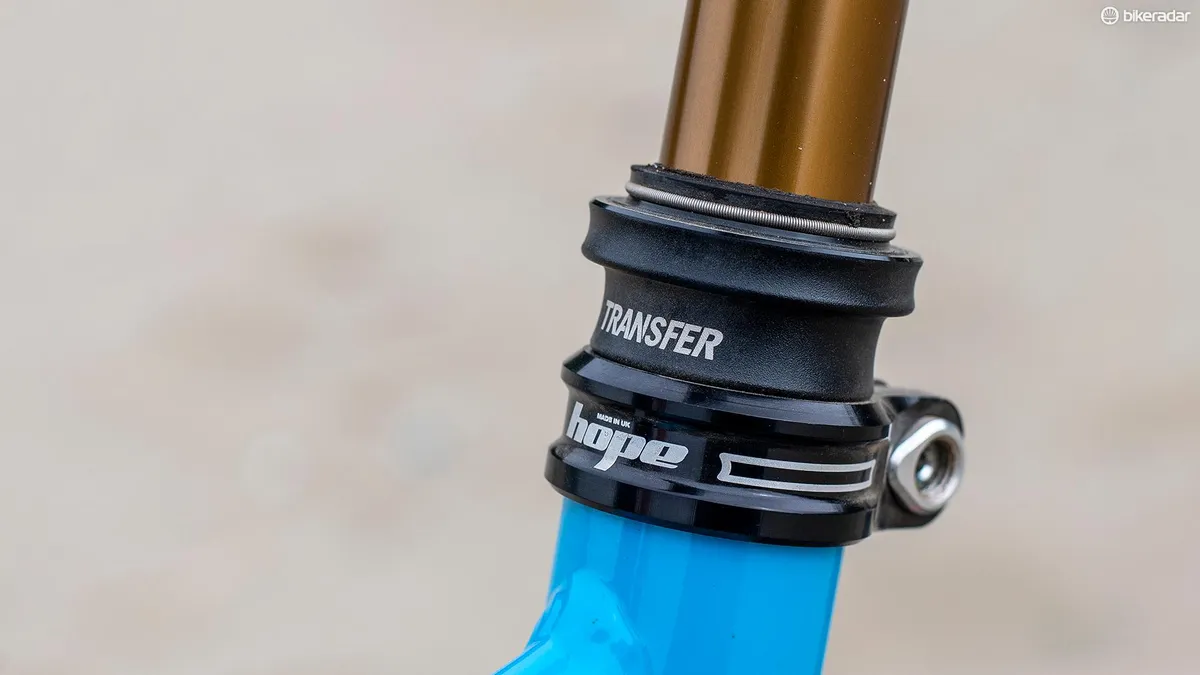
To top off the Fox kit, the bike’s also fitted with a 150mm travel Fox Transfer dropper post, although the bike’s Factory moniker doesn’t have anything to do with it being specced with Fox Factory kit.
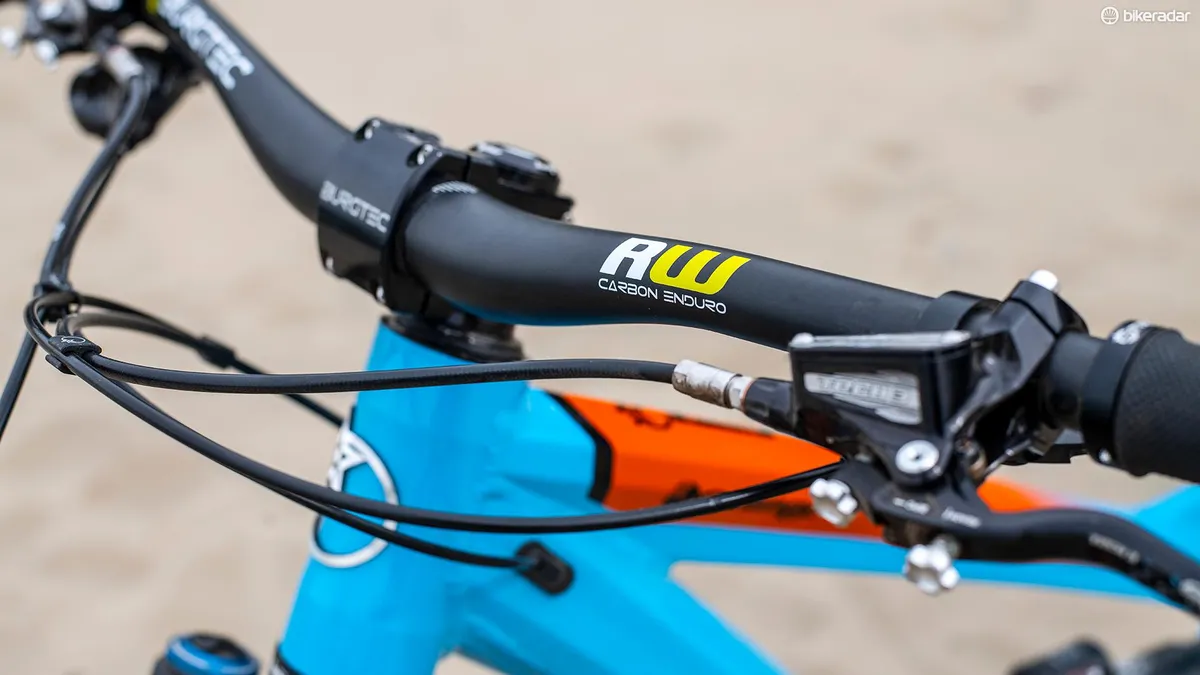
A Burgtec RideWide carbon 800mm-wide bar and a 35mm Burgtec MK2 Enduro stem take care of the cockpit area. Orange has specced its own-brand SDG Radar Strange saddle and added its own-brand grips too.
Orange Alpine 6 Factory geometry
Array
Orange Alpine 6 Factory ride impressions
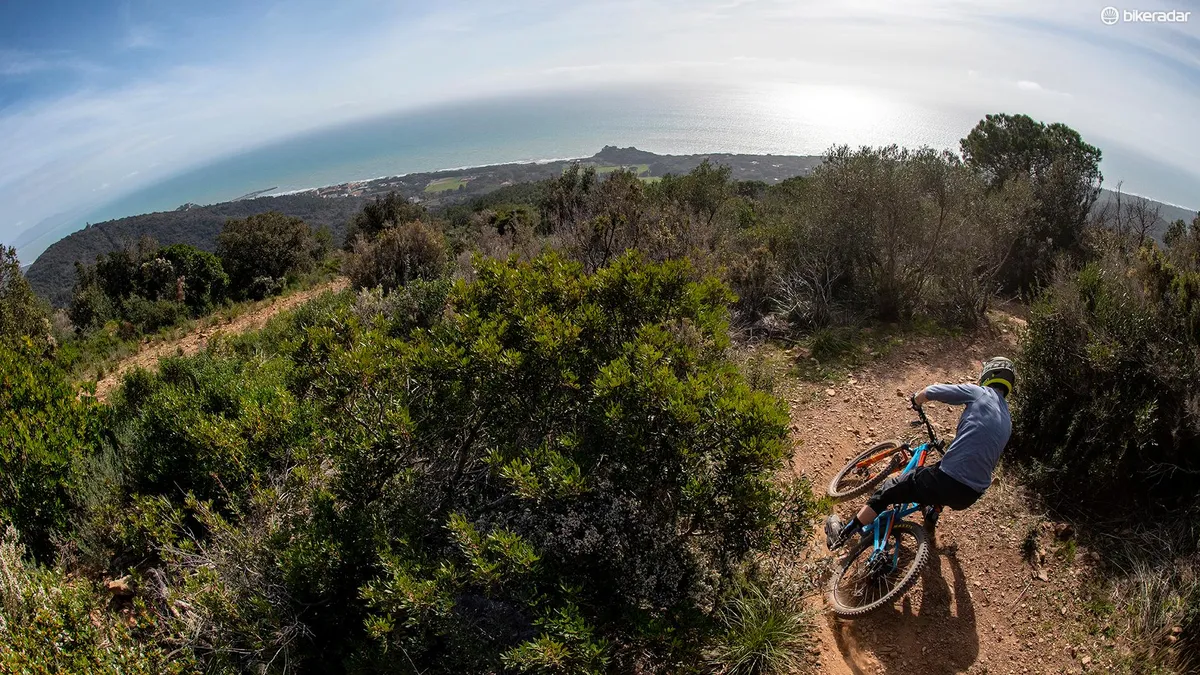
I was invited to Orange’s launch event for the new Alpine 6 bike in Punta Ala, Italy. It's a fantastic location on the Tuscan coast, with sizeable mountains and varying terrain right next to the sea. Its trails hosted the first EWS race back in 2012 — a fitting proving ground then for Orange’s longest travel non-DH bike.
Despite the changes Orange has made, if you take just a quick glance — or even a slightly more detailed look — at the new bike, you’re not going to notice a world of difference compared to the outgoing Alpine 6.
Shape-wise, the bikes are virtually identical. The most obvious change is the inclusion of bottle cage mounts on the down tube, but these are only apparent when you’ve got a bottle and a cage attached to them.
The inclusion of a bottle mount here is a double-edged sword. On the one hand, we’re very grateful that Orange has finally included this feature, on the other, it’s a pain that the bottle is directly in the firing line of dirt and debris.
A bottle with a teat cap will stop any contaminants entering your body, but the location isn’t ideal. I was also concerned that the bottle would jump out of its cage at the first sight of bumps or slightly gnarlier terrain.
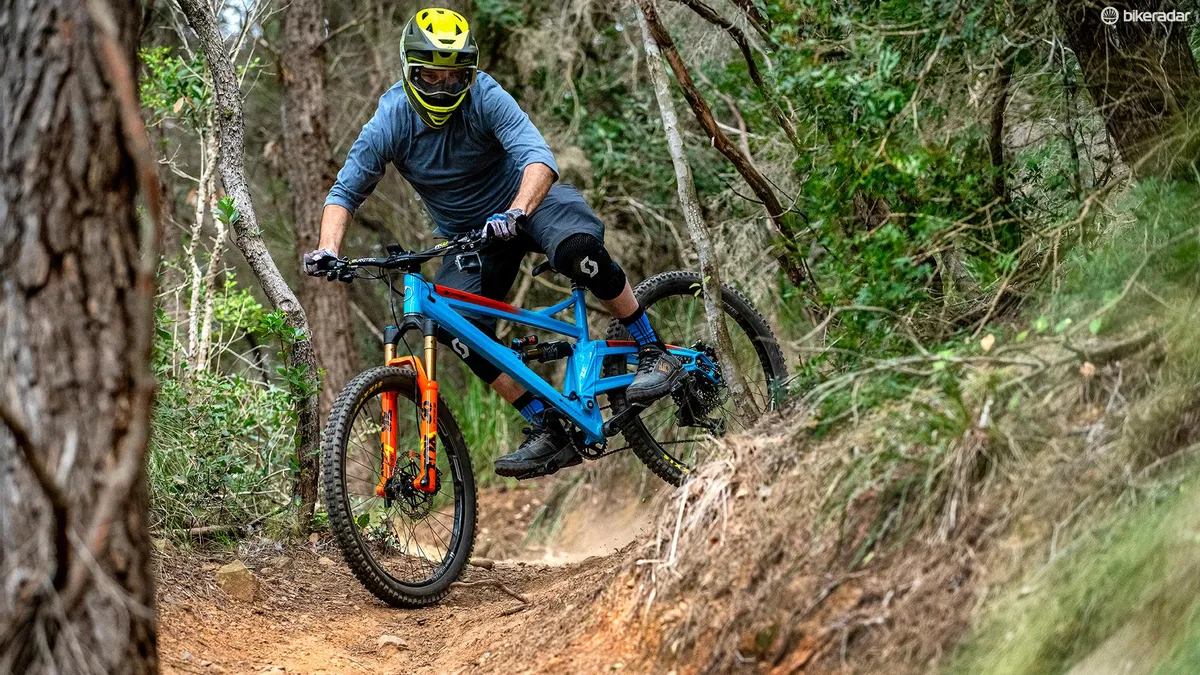
Out of the seven riders at the camp, I was the only one to lose a bottle: a metal bottle cage and a slightly chunkier, in size at least, bottle would prevent this problem, but it’s something worth considering.
The improved cable routing has eliminated the bulging that caused cable-to-knee-contact issues on the previous Alpine. I’m glad Orange has fixed this issue and it makes a big difference to how you can pedal the bike, both up and downhill.
Although Orange has lowered its anti-squat values for the new model, I didn’t feel like pedalling and climbing were any harder. In fact, just like the old bike, I didn’t need the climb lever unless I was on smooth tarmac at high pedalling cadences.
With the lever set on, the Float X2 shock aggressively locks out and pedal bob is all but eliminated. Off road, I found this setting to be too harsh and much preferred the additional traction and comfort offered by leaving the suspension open.
If you're ascending anything particularly steep, the lockout lever does help to keep the bike supported in its travel, but, as mentioned before, this is at the loss of traction.
Generally speaking, though, this bike is suited to the winch and descend style of riding, where the emphasis is on going downhill rather than climbing. With that in mind, it’s interesting that Orange has decided to run a 74-degree seat tube angle.
While this isn’t especially slack compared to most other bikes on the market, I did find myself instantly nosing the saddle down and putting it as far forward through the seat clamp as possible.
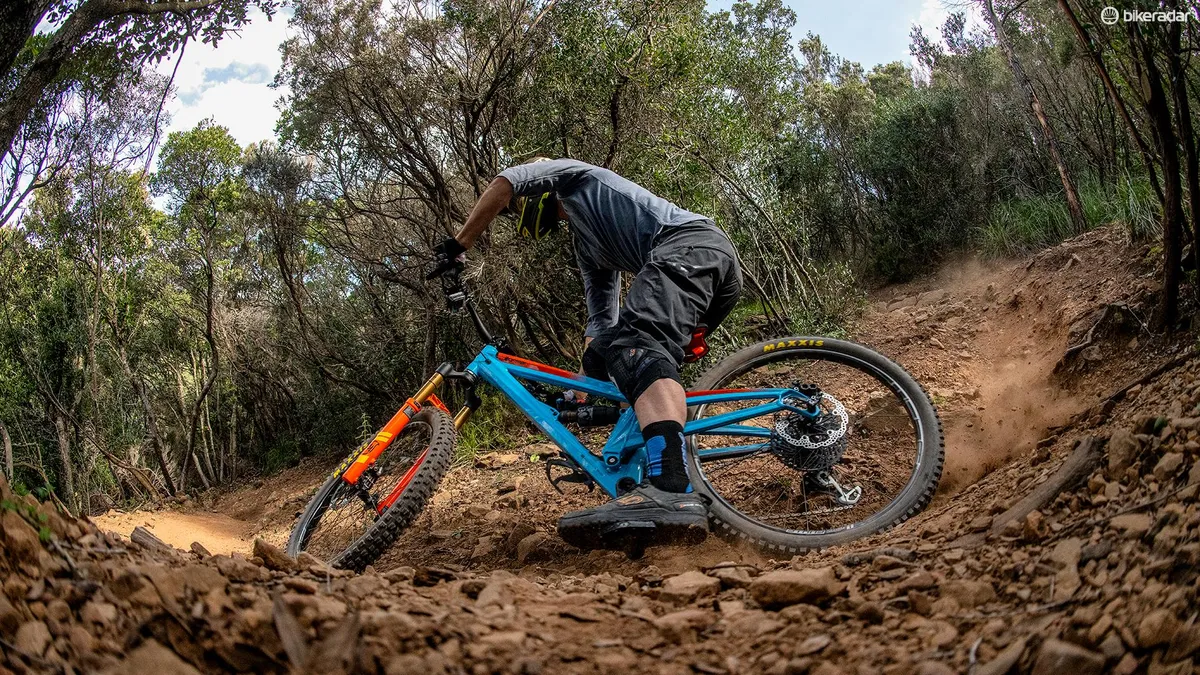
Once set to this position, climbing is a relatively comfy affair and even with the bike’s added reach, extended wheelbase, longer chainstays and slacker head angle I didn’t feel stretched out or that I was having to work hard to keep it on-line while climbing.
The bike’s party piece is how it descends. It’s smooth and capable with plenty of plush, bottomless-feeling travel that’s eager to absorb bumps, while remaining calm and composed in bigger, repetitive hits.
The factory-spec shock tune and volume spacer setup and suspension ratio curve mean the bike offers plenty of end stoke bottom-out resistance. The fantastic damping in the X2, when combined with the bike’s tune, makes it a hard chassis to overwhelm when you’re riding fast and aggressively.
Despite the increased reach, chainstay and wheelbase numbers, along with a host of other changes, the bike still has that unmistakable Orange feel. It really pops, generating speed and giving you as much back as you put in.
As long as you’re riding in a proactive, speed-searching way, the bike accelerates like a bat out of hell and doesn’t easily give up that pace.
The Alpine 6 rewards rider input, but if you become sloppy, lazy or disengaged from the ride, the bike is less fun. It doesn’t handle like some bump-munching suspension designs that let you get away with being more of a passenger.
This isn’t necessarily a bad thing, but it does require more skill and persistence to master.
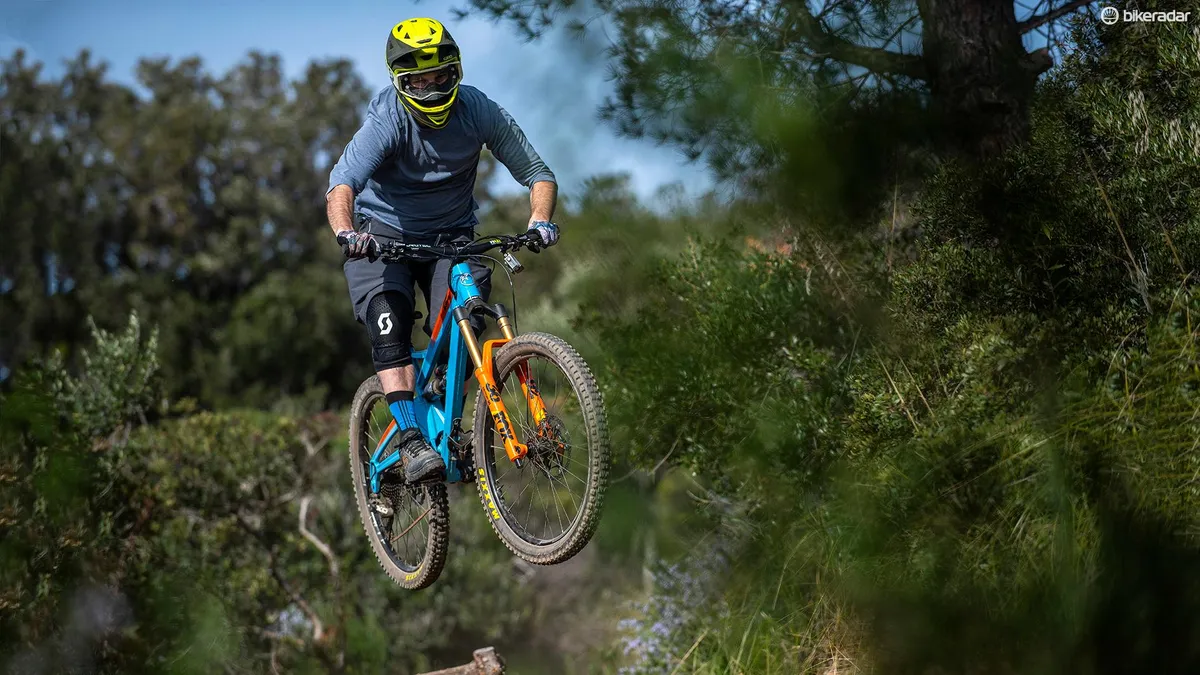
That said, Orange has tried to produce a more stable bike. With the shock’s vast range of useable tuning it was possible to make it behave in both a calm and fun way.
The increased bottom bracket drop does indeed translate to a bike that corners like it's on rails, and its prowess in the turns is impressive. Coupled with the fantastic mid-stroke support supplied by the X2 you can really give it your all around the bends.
Although the Fox Factory X2 and 36 are a well-matched and critically acclaimed setup, the bike doesn’t feel like it relies on the top-of-the-line suspension to supply its ride characteristics.
I’d wager that with the right amount of bottom out spacers and correct tune or setup it would feel just as good with a RockShox Yari RC and Monarch setup or Fox 36 and DPX2 Performance models.
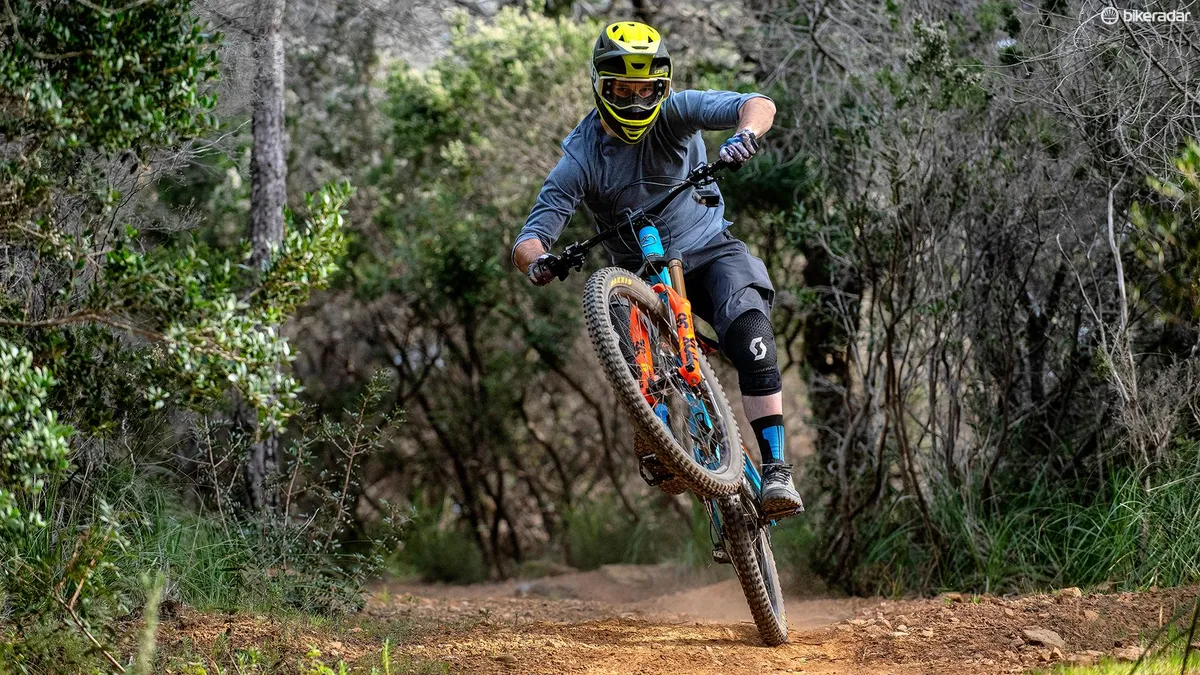
I had virtually no complaints about the kit the bike came supplied with, but that’s no surprise considering the level of spec on the Factory bike.
My only gripe was with Hope’s Tech 3 E4 brakes. There was a lot of pad movement in the caliper that was especially obvious when rocking the bike backwards and forwards. It didn’t translate to on-trail vibrations but it would be nice if pad tolerances were a bit tighter in Hope’s calipers.
There’s an easy way around this, though, and that would be to spec Shimano’s Saint brakes at a little extra cost.
Orange Alpine 6 Factory early verdict
The Alpine 6 is another evolutionary step in the right direction for Orange. The bike retains the fantastically fun ride qualities we expect from Halifax’s finest and gets some new tricks to boot.
